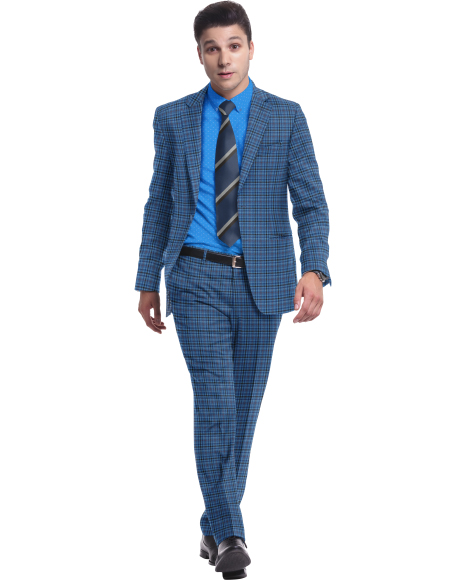Welcome to Shirtsmockup.com Online Apparel PSD Mockup Shopping Store!
Dec 18, 2023 / By / in Suit

In the ever-evolving world of men's fashion, the quintessential elements of a man's wardrobe are undoubtedly suits and shirts. These staples not only convey sophistication and professionalism but also serve as a canvas for personal style expression. Understanding the nuances between men's suits and shirts is important for achieving a polished and put-together look. In this comprehensive guide, we will delve into the intricacies of matching men's dress suits and shirts, exploring everything from color combinations to matching accessories.
A well-fitted suit is the cornerstone of a man's wardrobe, exuding timeless elegance and charm. Suits come in various styles, fabrics, and colors, catering to different occasions and personal preferences. Let's break down the key elements that distinguish men's suits:
Men's suits come in different styles, each with its unique features. The most common types include:
The choice of cloth plays a pivotal role in the overall aesthetic and comfort of a suit. Common suit fabrics include:
While suits provide the framework, shirts add the finishing touches to a man's ensemble. The right shirt can complement the suit, enhancing the overall look. Here are the key factors differentiating men's shirts:
The collar style of a shirt significantly influences the overall appearance. Common collar styles include:
The cuffs of a shirt add a subtle yet impactful detail to the overall look. Common cuff styles include:

In the ever-evolving world of men's fashion, the quintessential elements of a man's wardrobe are undoubtedly suits and shirts. These staples convey sophistication and professionalism and serve as a canvas for personal style expression. Understanding the nuances between men's suits and shirts is important for achieving a polished and put-together look. This comprehensive guide will delve into the intricacies of matching men's dress suits and shirts, exploring everything from color combinations to matching accessories.
A well-fitted suit is the cornerstone of a man's wardrobe, exuding timeless elegance and charm. Suits come in various styles, fabrics, and colors, catering to different occasions and personal preferences. Let's break down the key elements that distinguish men's suits:
Men's suits come in different styles, each with its unique features. The most common types include:
The choice of cloth plays a pivotal role in a suit's overall aesthetic and comfort. Common suit fabrics include:
While suits provide the framework, shirts add the finishing touches to a man's ensemble. The right shirt can complement the suit, enhancing the overall look. Here are the key factors differentiating men's shirts:
The collar style of a shirt significantly influences the overall appearance. Common collar styles include:
The cuffs of a shirt add a subtle yet impactful detail to the overall look. Common cuff styles include:

Now that we've explored the individual elements of men's suits and shirts, let's delve into the art of combining them for a polished and cohesive look. Transitioning seamlessly from one component to another involves understanding color combinations, patterns, and accessorizing.
The color combination of a suit and shirt is crucial for achieving a well-coordinated and stylish appearance. Let's explore some classic combinations:
The right accessories can transform a standard men's suit shirt and tie combination into a personalized and stylish statement. Here are some tips for accessorizing:
Mastering the art of combining men's suits and shirts requires awareness of detail and an understanding of style principles. You can create a wardrobe that reflects your personality and fashion sensibilities by exploring the different types of suits and shirts, understanding fabric choices, and experimenting with color combinations and accessories. Whether you're dressing for a formal event, a business meeting, or a casual gathering, the right men's suit and shirt combination will undoubtedly leave a lasting impression. So, go ahead, embrace your sartorial creativity, and step out with confidence in your completely curated ensemble.
Here's our Basic Guide to types of Men's Suits, Styles, and Details. Stay handsome, fellas. 1. Slim Fit Suit 2. Classic Fit Suit 3. Modern Fit Suit 4. Notch Lapel 5. Shawl Lapel 6. Peak Lapel 7. Single Breasted Suit 8. Double-breasted Suit 9. Unstructured Blazer 10. Patch Pocket Blazer 11. Single Vent Suit 12. Double Vent 13. No Vent.
British clothing often fits all body shapes well. Men who have this military-inspired haircut appear slender, powerful, and regal. To find out more about this particular and whether this suit style will fit you, visit the British Suits section of this page. Any small-framed man, as many Italian men are, looks great in an Italian suit.
Not all suits are crafted equally. They're cut in different ways to sit on men's bodies in various ways; some are tighter in certain areas and looser in others. These cuts are for finding the right style for your body type and comfort level. Slim-fit suits are designed to sit close to the body, with no loose areas.
A slim-fit suit for men is a tailored ensemble with a sleek and modern silhouette. Characterized by a narrow cut through the shoulders, chest, and waist, a slim-fit suit offers a more form-fitting and contemporary look compared to traditional fits. The trousers are also tapered for a streamlined appearance. This style caters to those seeking a trim and stylish fit, emphasizing a well-proportioned, fashionable aesthetic without excess fabric.
Jul 20, 2025 by Nayan Ali
May 27, 2025 by Nayan Ali